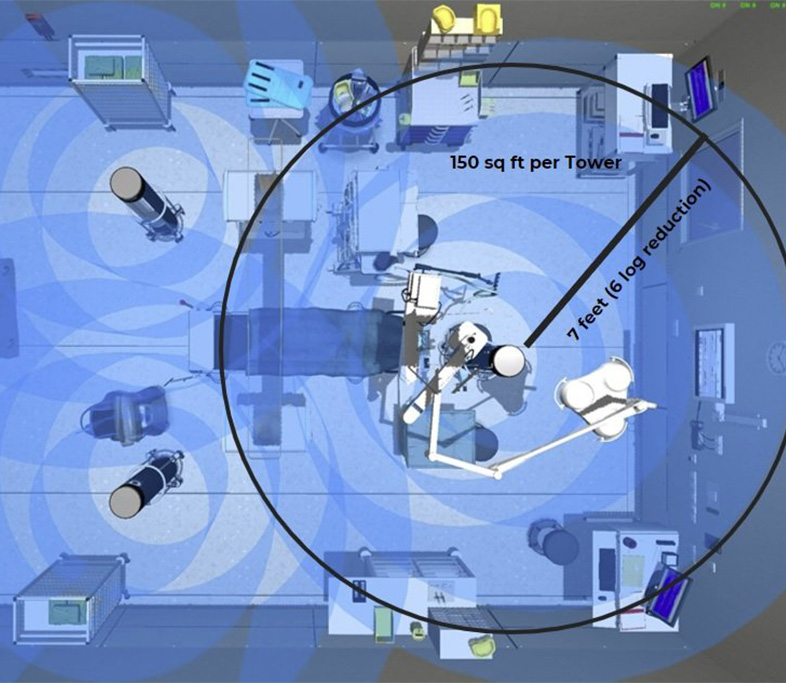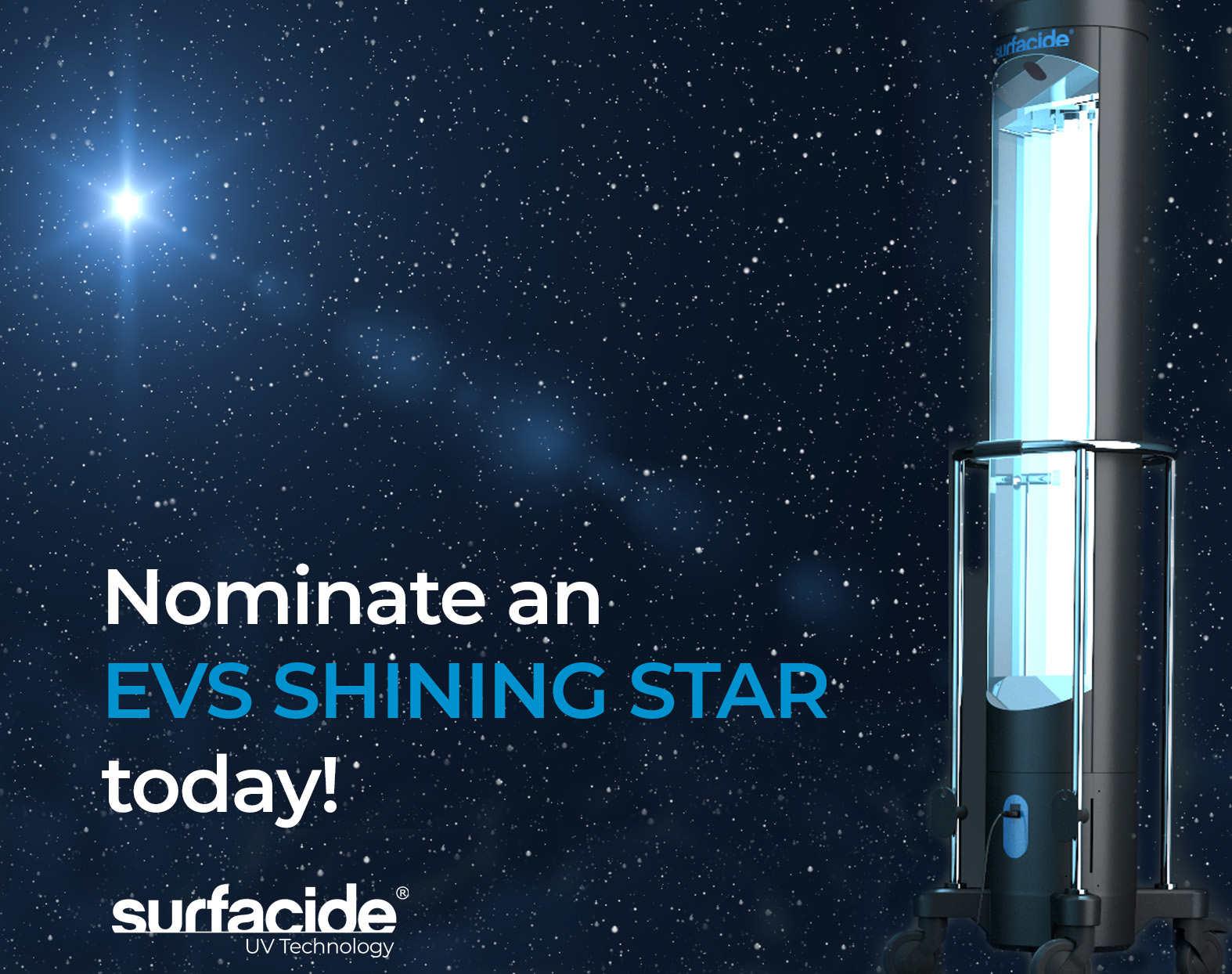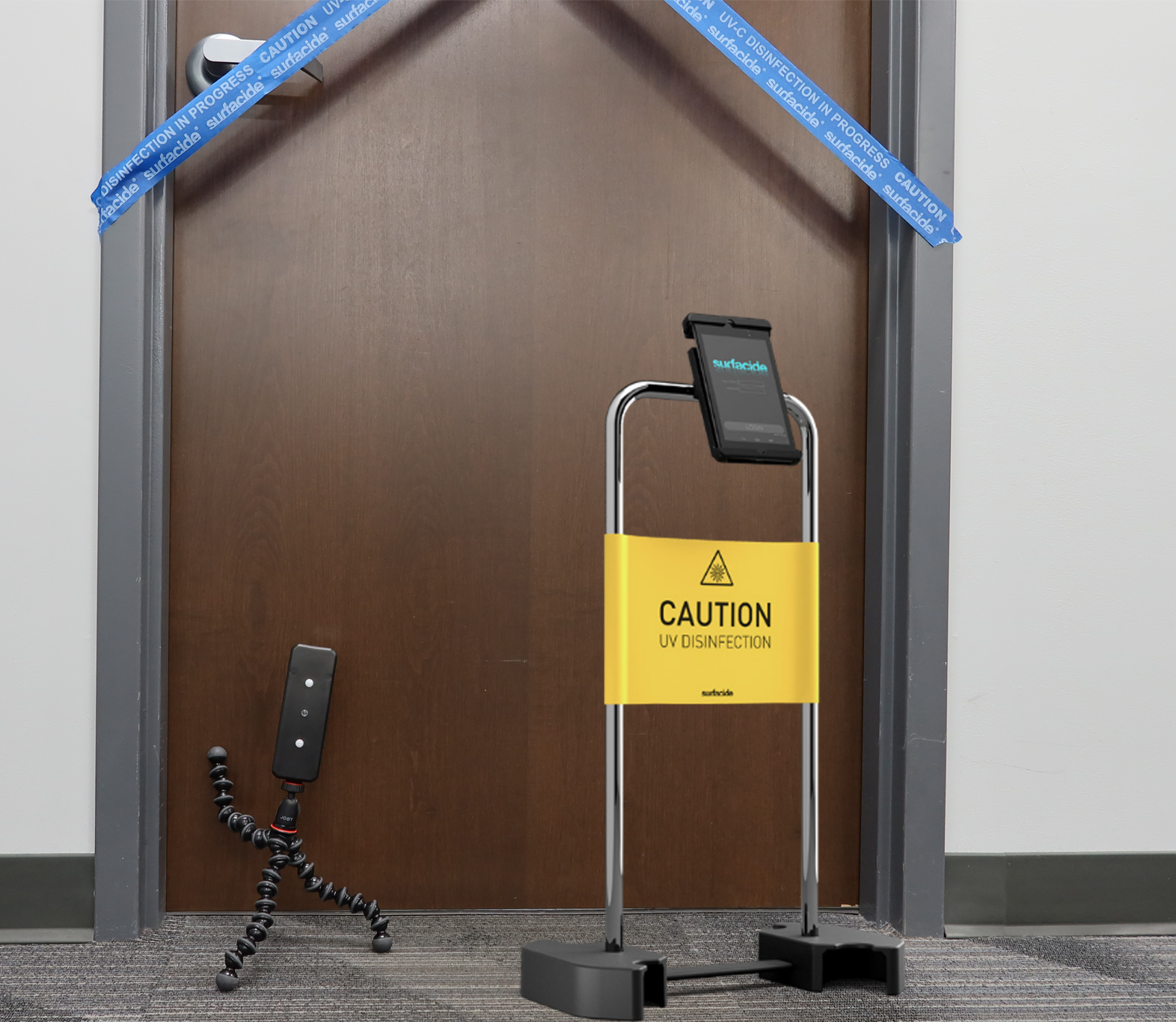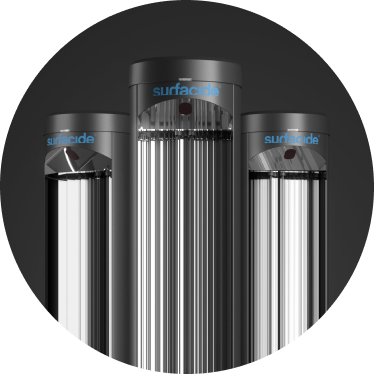Science doesn’t lie, UV light is a direct line-of-sight technology, that is why this week we are taking a deeper dive into the physics behind using three UV-C devices compared to just one. There are 5 key elements you should ALWAYS consider when purchasing and evaluating UV-C technology: Distance, Dosage, Shadows, Time and Labor.
Let’s take a look at how the use of three UV-C robots in a single cycle can address each of these areas – and as the world’s only patented, triple emitter ‘robotic’ UV light solution UV-C system on the market, we should know.

Distance & Dosage
Many UV-C companies claim to disinfect an entire room in as little as 5 minutes. However, science tells us that disinfection time is determined by the size and complexity of the space as well as the distance to the surface. Surfacide trusts the data. We tested using one robot vs three. The results are below:
One Surfacide UV-C Robot achieves the following:
- 6-Log Reduction
- Covers 150 sq feet
- UV-C dose delivered closer to fomites
Three Surfacide UV-C Robots aka “Surfacide Helios System”:
- 6-Log Reduction
- Covers up to 450 sq feet in a single disinfection cycle.
- UV-C dose delivered closer to fomites
Shadows
When you consider that healthcare spaces and environments outside of healthcare are complex, with objects throughout the space, it’s crucial to note that those objects will create shadows. UV-C light only disinfects surfaces that are in direct line of sight. That means the light won’t bend around the hospital bed or bounce off walls to disinfect a shadowed area. Don’t be fooled by companies that tell you their energy reflects off walls. We debunked this claim in our first blog of this series, Revealing the Truth Behind UV-C Claims.
Let’s put this into perspective. In the typical hospital room, there’s a bed, the bathroom, the computer stand, cabinets, and so on. You position a single UV-C robot at the end of the bed to disinfect the space. However, the bathroom and even the other side of the bed are in shadowed areas and therefore are not being disinfected with UV-C light.
Time & Labor
Now that we know distance, dosage and shadows impact UV-C efficacy, let’s talk about how these factors also influence time and labor. By utilizing three UV-C robots in a single disinfection cycle, the time you spend disinfecting a space is cut down by a third. Using a single UV device requires frequent repositioning and will require your EVS team to dedicate more time to turning over a patient room.
Surfacide gives you the power to do more with three UV-C robots in less time.






